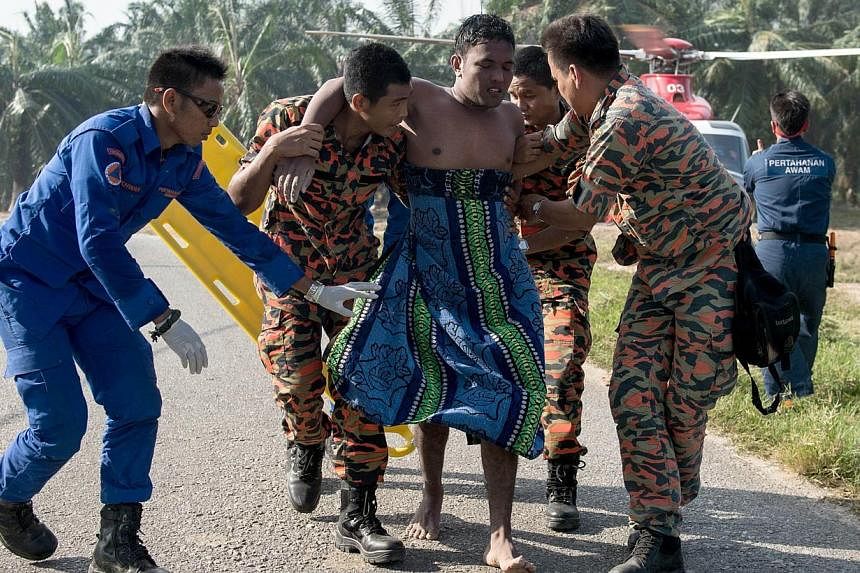PETALING JAYA (THE STAR/ASIA NEWS NETWORK) - Packed to the brim, rickety vessels called tongkang ferry thousands of illegals home to Indonesia every time Ramadan and Aidilfitri approach.
As the authorities are watching, the operators take routes that are not guarded - and certainly not safe. Then it becomes a game of death, with the passengers literally caught between the enforcers and the deep blue sea.
In the two sinkings this week, 13 died and 29 are missing and feared dead. Another 82 survived and are now detained or being treated at hospitals.
The Indonesians pay a high price for the dangerous trip. Fares range from RM640 to RM960 (S$249 to S$373) and on some occasions, RM1,600. Even with that kind of money, passengers get no life jackets and other safety equipment.
The syndicates operating the boats are known to pack them well beyond safety limits while the boat captains stay away from the safe routes to avoid detection.
Well away from established shipping lanes, the sea is choppy and risky. If things go wrong, there is no help nearby.
"They rarely depart until their boat is really full. They have no regard for the safety of the passengers. All they are interested in is making as much money as possible from a trip," said Federal Marine Police deputy commander Asst Comm Abdul Rahim Abdullah.
Most of them are actually fishing boats, also known as bot pancung, operated by Indonesians and are usually bound for either Tanjung Balai or Batam in Indonesia. Some Malaysians, it is believed, are involved in human trafficking for which these boats also serve.
Maritime authorities said the syndicates used several laluan tikus (secret routes) to transport the illegal immigrants to the boats.
At least 10 laluan tikus have been discovered around the country to date.
The known landing and exit points are in Batu Pahat, Pontian, Pengerang and Muar in Johor, Kuala Langat, Sungai Kesang, Pulau Carey, Banting and Tanjung Sepat in Selangor as well as Port Dickson in Negri Sembilan.
Malaysian Maritime Enforcement Agency deputy director-general (Operation) Datuk Mohd Puzi Ab Kahar said laluan tikus were in secluded areas.
He also said Malaysian waters covered a vast area and it was impossible to keep tabs on all sea activities.
"We have always monitored the activities of the syndicates but they are slippery and always change their tactics.
"If we identify certain hotspots, the syndicates would change their 'port of call'," Mohd Puzi told The Star.
He said it was vital for the agency to improve its intelligence gathering but to do that, it needed the cooperation of the public.
"When transporting illegals, most of the syndicates have to pass by villages to reach a jetty. Such movements should arouse suspicion and the people should alert the authorities as soon as possible," he said.

